VOTE DAILY FOR YOUR FAVORITE 2024 IMAGES!
learn more >>>
VOTING IS GOING ON NOW!
The
END OF THE YEAR AWARDS 2024
Double Exposures
February 16, 2021
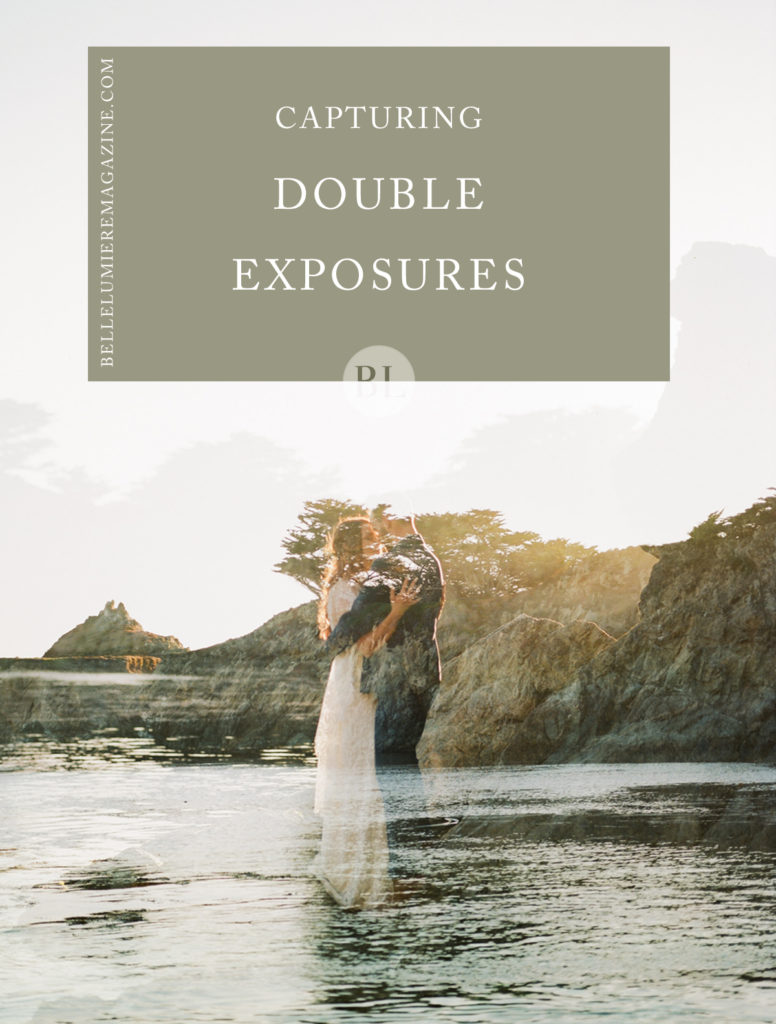
One of the reasons I have been drawn into shooting more and more film in a digital age is the ability to really allow myself to be more creative as an artist. When your shooting film you have to start your creative process before you even pick up your camera. One of the first things you have to do is choose which film stock is going to best work for your environment,
subject, and the emotion you want to evoke. Everything must be thought out and planned. Shooting film forces me to slow down and really think about what I am trying to accomplish for the image I am creating. Because let’s be honest, when every click of the shutter is costing so much, you do not want to just shoot on rapid fire and cross your fingers that something will turn out.
I have fallen in love with creating double exposures for my clients. It is something that pushes me creatively and gives my clients something unique! When I create double exposures I can combine two scenes into one frame. I find that double exposures come out dramatic or sometimes even dream like depending on the emotion you want to evoke. I truly love the creativity double exposures allow me as a photographer. I am able to choose the images and how I combine them along with the technique I use to create something special.
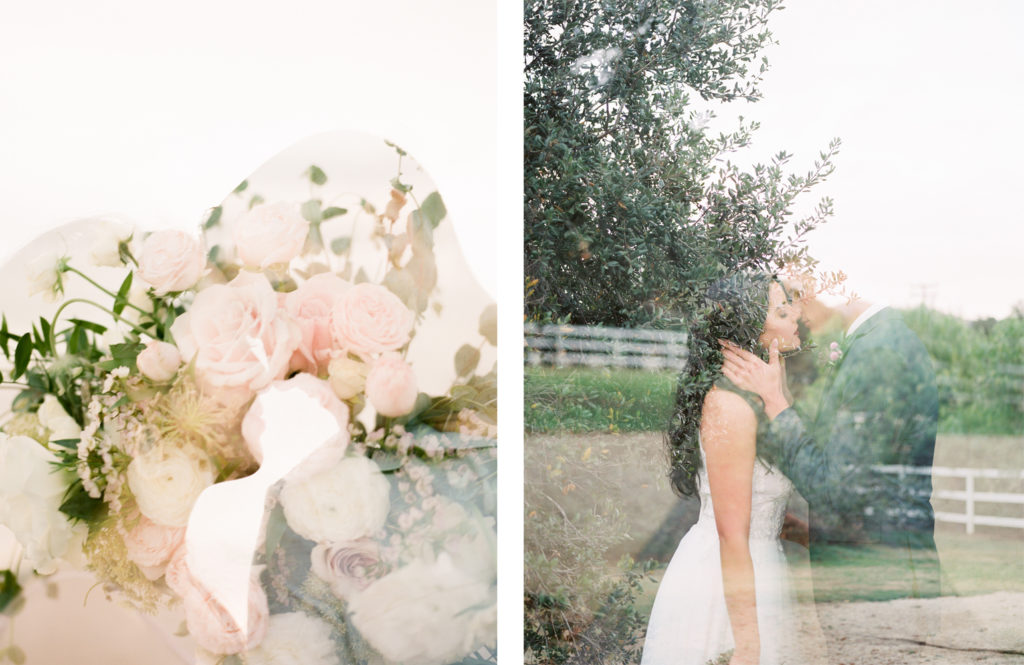
So what exactly is a double exposure? Simply put, it is the exposure of two images combined into one frame. Basically, you are overlaying two exposures in one image. Of course, double exposures have been around for a long time and the art of double exposing is nothing new. Although there are no set rules for double exposures it is important to follow some techniques. I am sure as with any art medium there are a number of ways to create your double exposure. I wanted to share with you some of the tips and techniques that have worked well for me. Of course, the best part is that there is always more to learn and experiment with. Hopefully, this will inspire you to try something new if you haven’t already!!
As with any image getting your exposure correct is crucial. It is important to keep in mind that you are going to expose twice on this one frame so exposing correctly is key for both images. I know many often “overexpose” when shooting with film but with double exposures you do not want to do this. Make a mental note that any part of your image that is true white or fully exposed will not take on any part of the second image. So you are going to want the dark and moody parts of your image to pop a little more then you normally do. This way details from both images shine through. To do this you want to shoot your two images at box speed. So for example if you are shooting with Fuji 400 and normally rate your film at 200. You will want to go rate your film to 400 for these two shots.
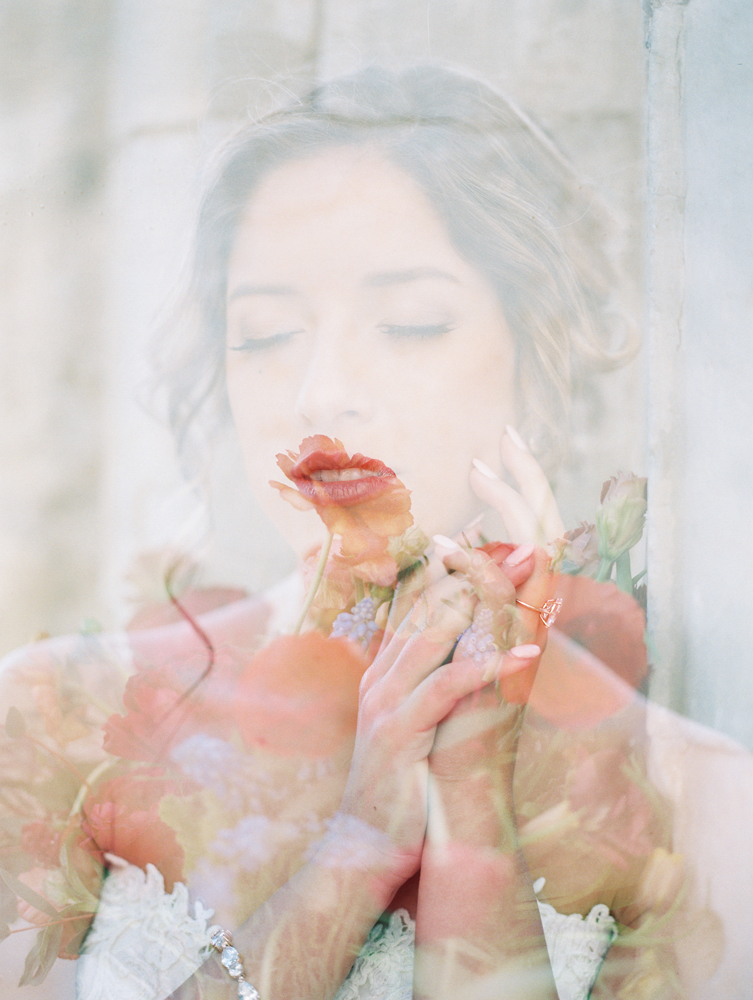
The next thing I think about when creating a double exposure is the background of the final image. Because I mostly shoot weddings, my double exposures are often of the couple and then either the florals, a detail, or the landscape. I want a clean background so I can create a simple outline (or silhouette) then I will place my subject against a blank background like a white sky or light wall. The trick is to remember where you want things to line up in your image. The shadows on one exposure will allow your details to show up on the other. You will not be able to see either image so it is important to make a mental note of your shadows and highlights in your first image so you know how you want to line up your second image. Remember any part of your first image that is fully exposed will not allow any part of the second to show up.
Another important thing to keep in mind when you are creating
a double exposure is how highlights and shadows will be changed when shooting two frames on top of one another. The shadows of your first frame will be filled by the shadows of the second frame. For example, if your bride has dark hair or your groom has a dark suit that is the area where you will see the details from you florals show up. Also, your highlights in your first frame will most likely only show up on the first frames shadows, so it is important to keep this in mind when you are deciding which frame to shoot first.
Another easy way you can play with creativity within your double exposures is to shoot both vertical and horizontal. I especially love doing this with couples and landscapes. For example, you can take a landscape photo horizontally and then another of your couple vertically. This will change the entire feel of the image and create a wonderful overlay!
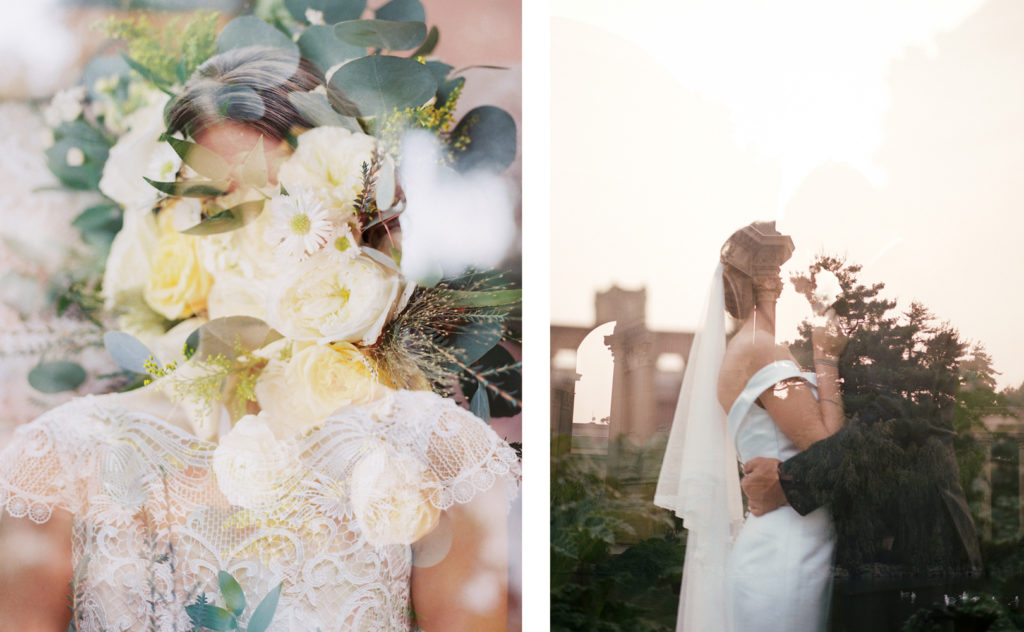
Something else you can do to play with your double exposures is to use a close up filter. For example, I might take a close up of the calligraphy on the wedding invites and then take the filter off and take my second image of the couple creating an effect that looks like you wrote on top of the image.
So how do you get started? The first thing to do is to review your cameras manual to see how you can make sure you do not advance your film after you take the first shot. Once you have figured that out you may want to start off with simple images. Meaning limiting the amount of “stuff ” in the two images. Two busy exposures can get chaotic and you may loose the details. If you are eager to start and just want to experiment you can double expose an entire roll!! You do this by exposing an entire roll then re-spool the film and re-shoot the entire roll again. Of course, there is no planning and your results may be unexpected but it’s a fun way to experiment and try something different. Another fun way to play with double exposures is to set up a group for film swapping were one person shoots a roll a then rewinds it and trades it with someone else to shoot on top of. The creativity and fun with double exposures is endless.
I like to shoot a couple double exposures at every session or wedding I shoot and usually I can get one really epic shot to share with the client and that is exciting for both of us! Don’t be afraid to experiment and try something new.
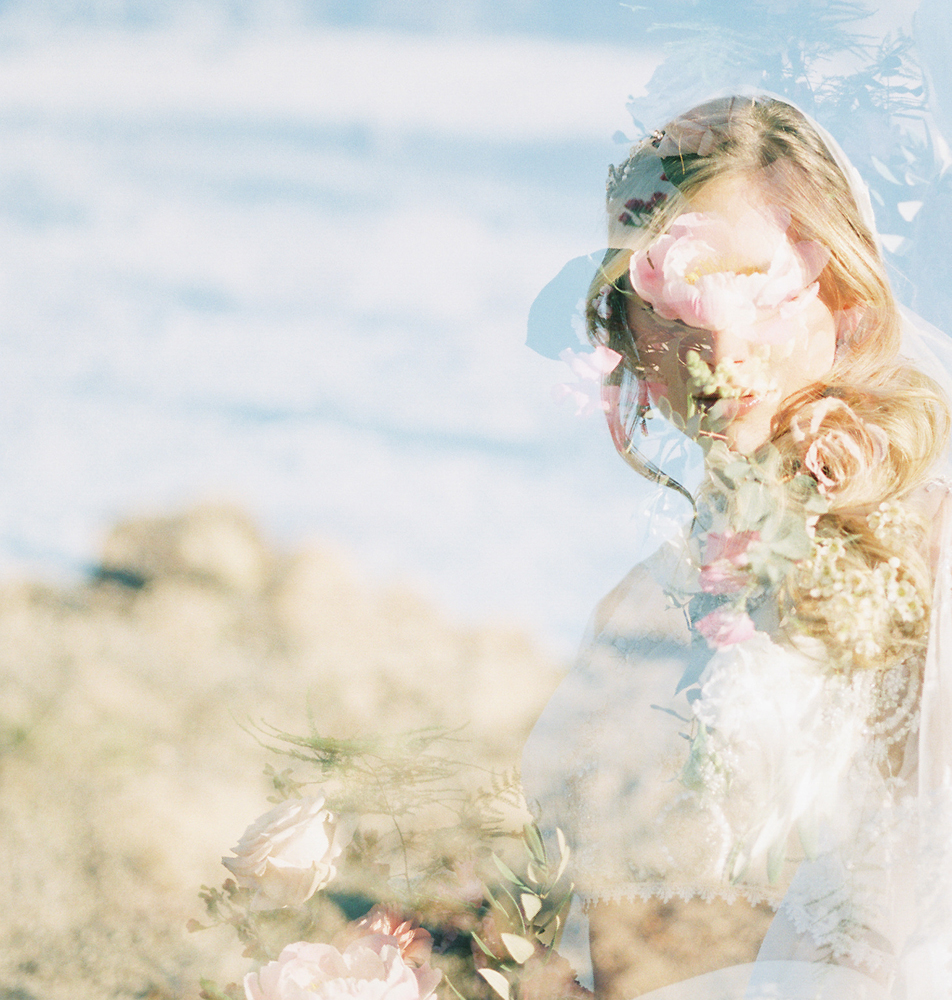
Heather Anderson
Heather is a hybrid wedding photographer, adventure seeker, light chaser and chocolate addict who loves all things romantic! She grew up surfing in sunny southern California, chasing waves and watch- ing the sunsets over the water. She thinks it was all those days at the beach watching the light and the water dance that made me fall in love with warm light and sunsets. Chasing light, warm sunny photos and keeping it real is what she does best!
heatherandersonphoto.com
@heatherandersonphotography
Did you know this article is 1 of 40 articles included in our 2019 issue bundle?!! All of which can be grabbed up for 50% off (which is less than $8 an issue). CLICK HERE to learn more about volumes XIV – XVII!!
Some great ideas for double exposures. I love the idea of double exposing the couple’s calligraphy! I need to try some of these out for myself!